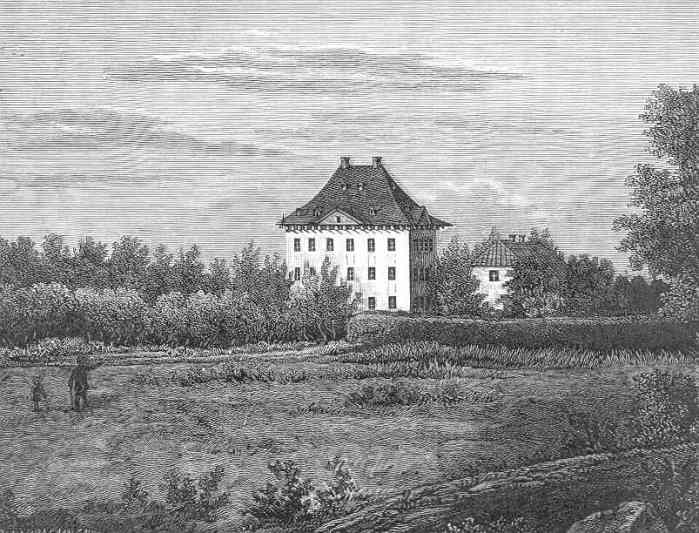Sahti is a type of farmhouse ale from Finland. Brewing techniques of sahti have varied over the centuries and here we present one recipe from Louhisaari Estate dating back to the end of 1700s.
Louhisaari Estate itself is a manor built in mid-1600s and, after various phases, converted to a museum in 1960s. The manor archives, currently held by Finnish National Museum, contain, among other items, a collection of recipes from different eras. While the actual source of the recipe collection is unknown, it is believed to originate from the Mannerheim family, the owner’s of the estate between 1795-1903. The recipes are documented in a book published in 2008.
Based on analysis of handwriting, the recipes have nine or ten “authors” (some texts are copied from other sources), whose identities are mostly unknown. From “Handwriting B”, comes a recipe titled “Kaljan eli sahdin kuvaus” (“Description of beer ie. sahti”, pp. 60-62), estimated to be written in 1770-1780s. The translated text reads as follows:
“Take 1/8 barrels [16 L] of good malts and grind them. Put the ground malt into a half-barrel [ie.] 24 jug vessel. Then take boiling water, boiled down to a third of its volume and then pour it onto the ground malt. Finally heat a few gray stones glowing hot. The stones are placed in the vessel and the liquid is mixed well with a new birch broom. Uniformly mix as long as the gray stones keep the liquid boiling and until the liquid cools down enough that the yeast can be added. A container, to which this is to be put, is prepared so that after it is cleaned, the insides are rubbed with an egg-size piece of bread or sourdough lump. The prepared drink is sifted to the barrel through a fabric of linen. Then take some black currant branches, some field mint, a little dill, five generous spoonfuls of good yeast, which are added to the barrel, which is then carefully bunged and taken to the cellar. Note. While this is boiled with the stones, a tankard-full [1,3 L] of rye flour is whisked or mixed into it. Then when the liquid has been in the barrel for four days, it is ready to drink.”
Sources
Louhisaaren linnan talousreseptit [Louhisaari Estate Household Recipes] (n. 1770 – 1850) (2008). Suomalaisen Kirjallisuuden Seuran Toimituksia 1197, Tieto, Helsinki
Image source: Wikimedia Commons
Unit conversions: Wikipedia

This is extremely interesting on a number of counts, given how early this recipe is.
The first thing I note is that there’s no mention of juniper. That’s a recurring theme for 18th-century recipes, but I don’t yet know why.
Second, it sounds like they’re fermenting in the mashtun. That’s extremely unusual to put it mildly. I’ve only ever heard of one other case of that, which was in western Norway.
Third, there’s no strainer (kuurna)!?! They’re filtering through a cloth instead? That’s bizarre. Never heard of that before. I have heard of brewing without a strainer, though, but only once, and that was in central Sweden.
Fourth, the use of stones. Like every other account I’ve ever seen (5-6, perhaps) they use them in the mash.
Fifth, the rubbing with bread dough. I saw that in Latvia, too, and the purpose seems to be to close off leaks.
All in all, an exceptionally interesting recipe. Thank you so much! 🙂
Thanks, glad you like it. Obviously, the biggest thanks goes to the author of the book
I think that the fermenting vessel is separate from the mashtun. It’s referred to as container (or maybe translated as vessel) and it seems to be prepared separately.
Kuurna is not mentioned here, just the cloth.
The dough could be used to close leaks. I have heard that the barrel bung can also be sealed tight with dough. Sourdough would also contribute its microflora, at least lactic acid bacteria and wild yeast, I think, that would have some effect even though the fermentation and maturation time is relatively short.